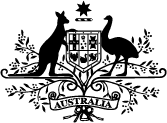The Morrison Government is investing an additional $11 million to better protect and improve supports for workers in dust generating industries and their families.
The funding addresses key recommendations from the National Dust Disease Taskforce’s final report on a national approach for the prevention, early identification, control and management of dust diseases in Australia.
Minister for Health and Aged Care, Greg Hunt, said the additional investment is a cornerstone of the Government’s commitment to address the increased incidence of silicosis and other dust diseases.
“The Morrison Government is supporting communication and education activities to raise awareness about the risks to lung health targeting those working in high-risk industries, and a single centralised online hub to provide information, support and expert advice to affected workers and their families,” Minister Hunt said.
“Our Government is also supporting more training for medical professionals to help them effectively diagnose and treat patients affected by dust diseases. A new silicosis care management plan will guide their consultations with patients.”
“The National Occupational Respiratory Disease Registry, which will be operational by the end of 2022, will capture data on the incidence of occupational respiratory diseases in Australia and guide research to better our understanding of respiratory diseases.”
Attorney-General and Minister for Industrial Relations Michaelia Cash said today’s announcement is an important milestone for workers, their families and industry.
“Silicosis is a fibrotic lung condition caused by inhaling very fine silica dust, known as respirable crystalline silica. Silicosis is preventable and currently there is no cure,” Minister Cash said.
“These new measures build on work being undertaken by our Government to better protect workers including the development of a national approach to silicosis prevention in Australia.
“The Morrison Government is committed to working with industries across the nation to lessen the instances of dust diseases.”
The Taskforce found that almost a quarter of engineered stone workers who have been in the industry since before 2018 suffer from silicosis or other silica dust-related diseases.
Workers from a wide range of industries are affected. This includes construction, tunnelling, mining and quarrying. Numbers are expected to grow given the exposure of workers to very high levels of silica dust in the engineered stone industry since the early 2000s.
The report also provides additional support to medical practitioners through the recent release of the National Guidance for Doctors Assessing Workers Exposed to Respirable Crystalline Silica.
The Government acknowledges the significant work already undertaken by jurisdictions and Safe Work Australia to address silicosis. Much of this work goes to addressing a number of the Taskforce’s recommendations. This includes publication of guidance on working with silica and silica-containing products, and development of a new model Code of Practice on managing the risks of working with respirable crystalline silica, which provides businesses with practical guidance on how to work with engineered stone safely.
Safe Work Australia is also undertaking a regulatory impact analysis to explore whether further work health and safety measures are needed to ensure workers are provided with the highest level of protections in relation to their health and safety from working with silica-dust.
The Government thanks the National Dust Disease Taskforce for their expertise and hard work and commends members for their efforts to drive reform in this important area of public health.
